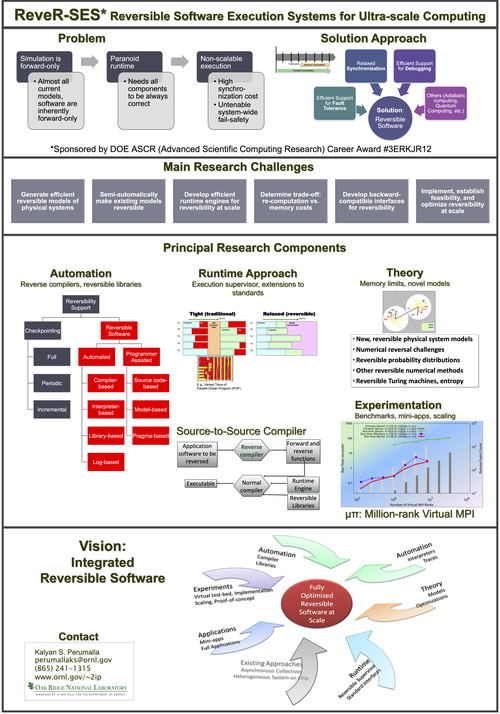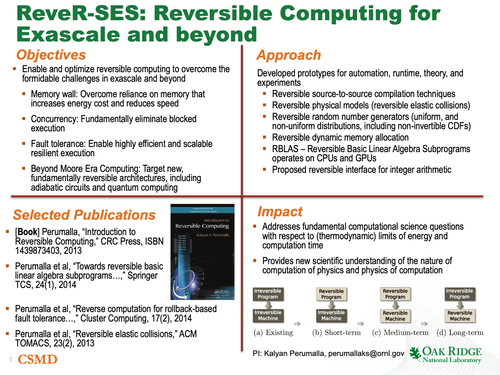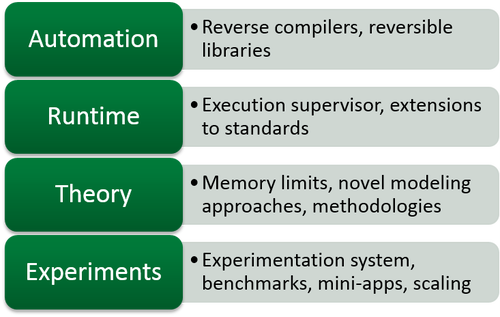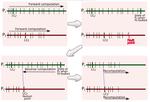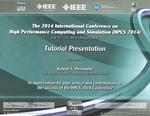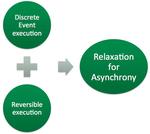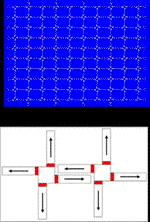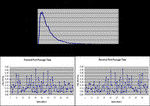ReveR-SES: Reversible Software Execution Systems
Reversible Software Execution Systems ReveR-SES is a paradigm shift in ultra-scale computing to address the outstanding scaling challenges by enabling an entirely new, orthogonal dimension to all aspects of traditional, forward-only computing.
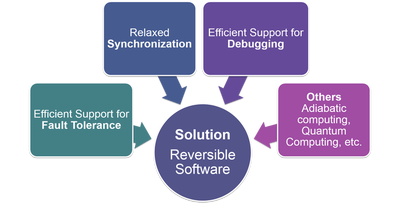
Overview
ReveR-SES not only provides expeditious, novel solutions to scaling problems, but also opens new, longer-term research and development directions in high performance computing.
All traditional computing is done forward-only, but never in reverse order. Only recently it has been discovered that executing codes backwards can be used to greatly increasing the efficiency and usability of high performance computing. However, rendering a program reversible is an extremely challenging endeavor. This project is focused on developing the methodologies to exploit reversibility to enable scaling applications to ultra-scale platforms with 1,000,000 processor cores.
ReveR-SES contains several novel ideas, including reversible compilers, reversible libraries, reversibility extensions to standard interfaces, as well as relation to thermodynamics, information and entropy.
Quad chart
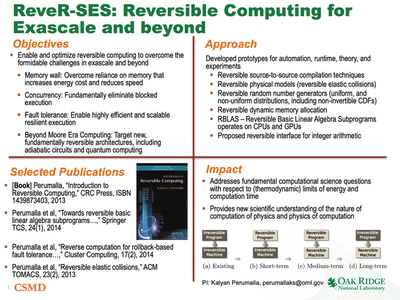
The reversible execution paradigm represents an entirely new research direction, yet, has immediate relevance to existing DOE applications and also the potential for creation of entirely new technologies and the creation of new high-technology jobs in computing. This is due to the orthogonality of reversibility to many existing HPC dimensions.
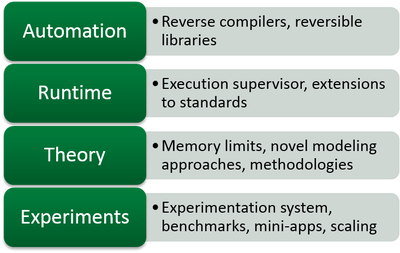
Overall, the new execution paradigm provides energy savings in the short-term and better energy-efficient designs in the longer term. The reversible execution systems are directly relevant to important applications such as climate, plasma physics, and materials science simulations.
ReveR-SES was Dr. Kalyan Perumalla’s Early Career Research project 2010-2015, awarded as a single-principal investigator, $2.5 million project.
https://science.osti.gov/ascr/Community-Resources/ECRP-Awardees
Scope
- To define, develop, test, and implement the paradigm of reversible software execution for exascale computing.
Primary Scientific Thrusts
- Developing fundamentally new reversible computer arithmetic and logic
- Designing efficient asynchronous rollback-based recovery via reversible execution
- Redesigning traditional physical system models to enable reversible simulation
- Reevaluating theoretical computational and energy consumption interplay.
Science Impacts
Enables new capabilities for computational science common to many areas
- Extremely efficient method for fault tolerant simulations on next generation heterogeneous (CPU+GPU) systems
- Solves the synchronization problem at very large scales of concurrency
- Overcomes undesirable reliance on memory
- Addresses the exascale hardware problem of high ratio of computational speed to memory speed
- Computational energy reduced via reduced memory footprint
- Provides the most promising approach to debugging at exascale.
Enables Theoretical Advancements
- Directly relates energy of computation to computational model characteristics
- Positions scientific simulations for future reversible computing hardware (adiabatic circuits, Quantum Computing).
Gallery
Organization
- Sponsor: US Department of Energy (DOE)
- Office: Advanced Scientific Computing Research (ASCR)
- Program: Early Career Research Program (ECRP)
- Prime: Oak Ridge National Laboratory (ORNL)
Selected Publications
